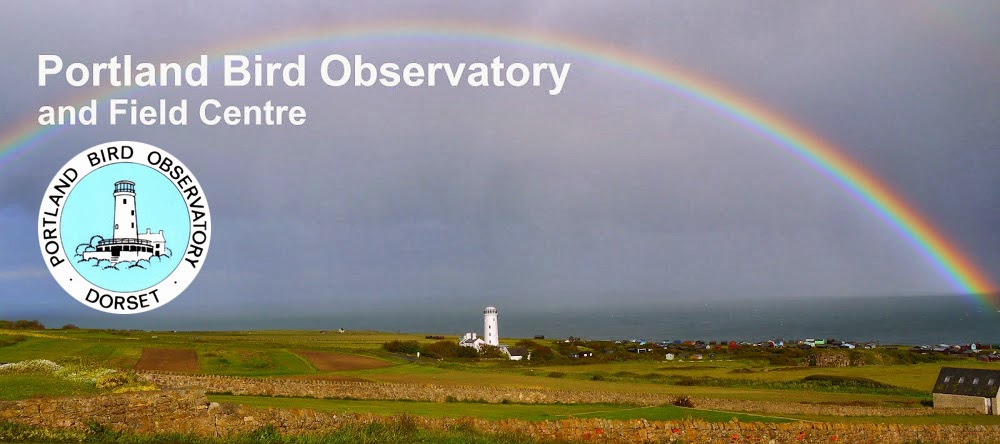Portland's been on a real roll just lately and remained in fine form today: the
Golden Oriole of the last two days lingered on, with a second individual showing up at the Obs, whilst 2
Red-rumped Swallows roamed about overhead at the Bill for an hour or more during the morning. Common migrants were also well represented at the Bill, with the 9
Chiffchaffs including 8 new individuals trapped at the Obs; 6
Spotted Flycatchers, 2 each of
Wheatear and
Willow Warbler, and singles of
Yellow Wagtail,
Redstart,
Whinchat and
Blackcap were also new there. Extensive coverage of the north of the island came up with an additional 25
Chiffchaffs, 12
Spotted Flycatchers, 7
Wheatears and 1
Yellow Wagtail. The sea wasn't to be outdone, with 2
Great Northern Divers and 2
Pomarine Skuas through off the Bill.
Immigrant moths included 3 more
Delicates trapped overnight - 1 at the Obs and 2 at the Grove.
The events surrounding the discovery that there two Orioles were slightly odd: what we took to be the bird of the previous two days had been singing well at times in the bottom of the Obs garden and when one appeared in a mist-net right there we assumed it'd be that individual; on taking it up to the patio for viewing we discovered that the 'original' bird had in fact left the garden and was being watched at that moment in the Strips © Martin Cade:


The original bird was also trapped later in the day in what was almost precisely the same spot in the same net. It was a tad brighter than the first bird and had noticeably paler lores but to all intents and purposes they were pretty similarly-plumaged and we took it that both were first-summer males. Presumably as a result of it feasting voraciously on Brown-tail and Lackey caterpillars over the previous couple of days (in the same bushes as last year's Great Spotted Cuckoo), the original bird was considerably heavier than the newcomer; it had though been through the wars: it had a pretty sizeable tick beside one eye and a largely dried-up wound on one wing - it hadn't been seen for a couple of hours before capture and we wonder if something had had a go at it earlier in the day and it had been keeping its head down for a while © Martin Cade (top) and Paul Ward (bottom):
What we assume was this original individual was singing really nicely at times during the morning:
The two Red-rumped Swallows put on a nice albeit usually rather distant show as they ranged about overhead south of Culverwell and Privet Hedge © Keith Pritchard (top) and Martin Cade (others):


















































